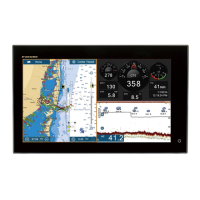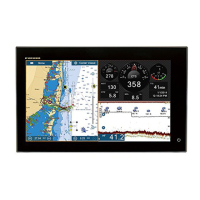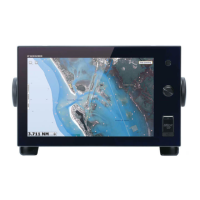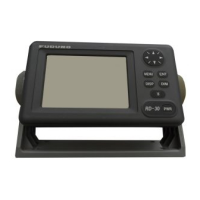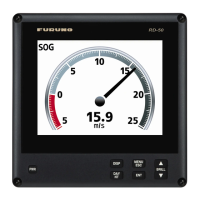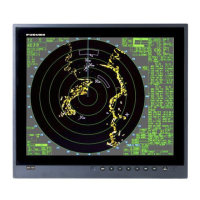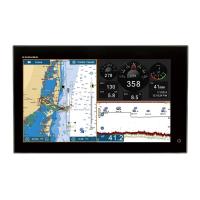7. FISH FINDER (SOUNDER)
7-26
Nature of a bottom
The nature of a bottom is known from the intensity
and length of the bottom tail. To find the nature of
a bottom, use a long pulse length and normal gain.
For the hard and rough bottom, the bottom echo is
reddish-brown with a long tail. For the mud or sand
bottom, the bottom echo has less red and with a
short tail. A bottom with a lot of small particles can
give a long tail on the low frequency picture.
Fish volume
The size and density of a school of fish are indi-
cators of the quantity of fish.
Size of a school of fish
Usually the size of fish echoes on the screen is proportional to the actual size of the
school of fish. However, if two fish echoes appear at different depths with the same
size, the school of fish at the shallower depth is larger because the ultrasonic beam
widens as it propagates and a school of fish in deep water is displayed larger.
Large schoolLarge school
Small schoolSmall school
Size of school of fish
Sounding time for a deep school of fish
school
or
o
di
tim
Sounding time for a shallow school of fishSounding time for a shallow school of fish
School depth and sounding time
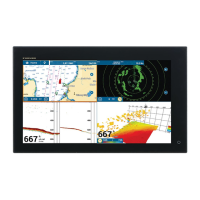
